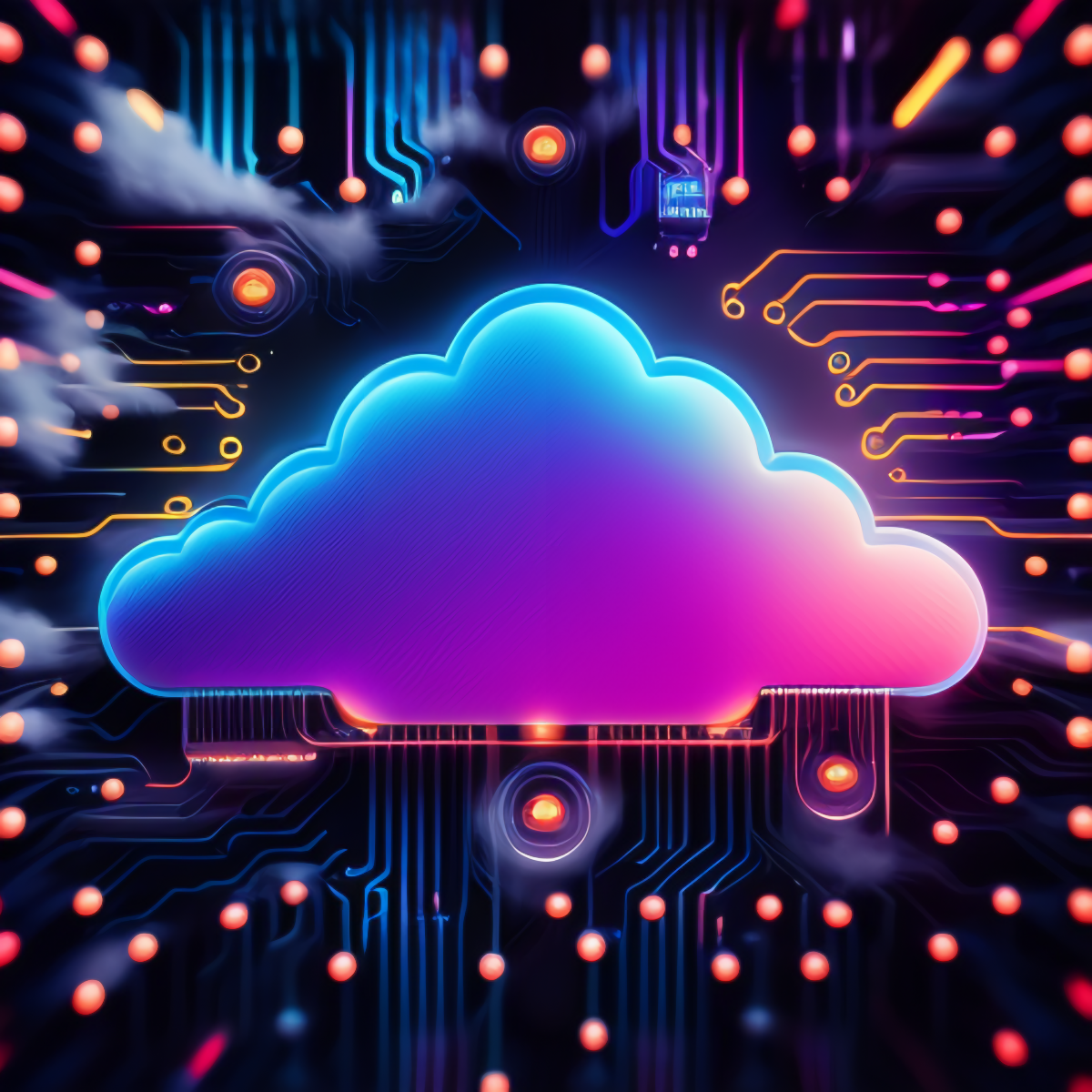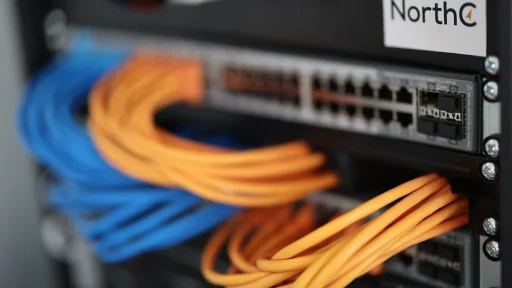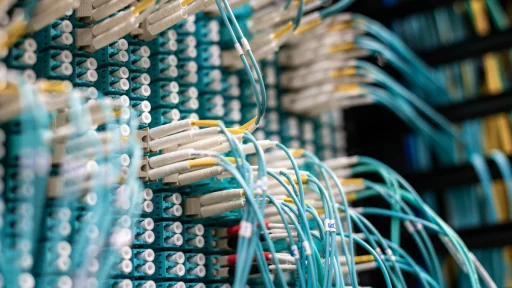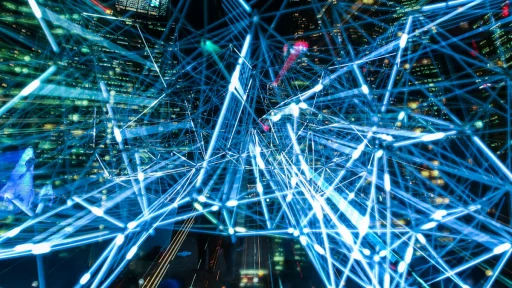Building a data center from scratch can seem daunting, but understanding each step is crucial. When you build a data center, it’s important to consider the growing demand for these facilities, which now account for about 1-1.5% of global power consumption. This figure is expected to rise, highlighting the importance of efficient design. A well-executed project not only meets your current needs but also adapts to future demands. By focusing on efficiency and sustainability, you can build a data center that supports your business objectives while minimizing environmental impact.
Assessing Needs
Before you build a data center, you must assess your needs thoroughly. This step ensures that your data center aligns with your business objectives and can adapt to future demands. Proper evaluation of both present and anticipated needs is crucial for designing a facility that grows with your business.
Define Purpose and Scope
Identify Business Objectives
Start by identifying your business objectives. Ask yourself what you aim to achieve with the data center. Do you need it for data storage, processing, or both? Understanding your goals will guide the entire project. It helps you focus on what’s essential and avoid unnecessary features that could inflate costs.
Determine Capacity Requirements
Next, determine your capacity requirements. Consider the volume of data you expect to handle now and in the future. Right-sizing your data center is vital. It prevents overspending on space and resources you don’t need. By managing demand effectively, you can optimize costs and ensure your data center remains efficient.
Establish Requirements
Technical Specifications
Once you’ve defined your purpose and scope, establish the technical specifications. These include the types of servers, storage solutions, and networking equipment you’ll need. Ensure that your choices support scalability. This way, your data center can accommodate growth without major overhauls.
Budget Constraints
Finally, consider your budget constraints. Building a data center involves significant investment. You must balance your technical needs with financial realities. Prioritize essential features and explore cost-saving strategies. For instance, demand management can help reduce unnecessary expenses. By planning strategically, you can build a data center that meets your needs without breaking the bank.
Designing Infrastructure
Designing the infrastructure of your data center is a critical step. It involves making decisions that will impact the efficiency, scalability, and reliability of your facility. Let’s explore the key components of this process.
Location Selection
Choosing the right location for your data center is essential. You need to consider several factors to ensure optimal performance and accessibility.
Geographic Considerations
When selecting a location, think about geographic factors. Areas prone to natural disasters like earthquakes or floods may pose risks. Choose a site with a stable climate to minimize environmental challenges. This decision can significantly affect the long-term reliability of your data center.
Accessibility and Connectivity
Accessibility is another crucial factor. Your data center should be easily reachable for maintenance and upgrades. Additionally, ensure robust connectivity. Proximity to major network hubs can enhance data transfer speeds and reduce latency. This ensures seamless operations and better service delivery.
Design Standards
Adhering to design standards helps you create a data center that meets industry benchmarks. This ensures your facility remains competitive and efficient.
Industry Best Practices
Follow industry best practices when designing your data center. These include using modular designs and implementing energy-efficient technologies. Schneider Electric Data Center Networking Solutions offer tools that optimize functionality while reducing energy usage. By adopting such solutions, you can enhance the overall quality of your data center.
Scalability and Flexibility
Design your data center with scalability in mind. Data Center Scalability and Equipment Layout emphasize the importance of accommodating future growth. Plan equipment locations and layouts to allow for easy expansion. This approach prevents costly redesigns and ensures your data center can handle increased workloads.
Power and Cooling
Power and cooling systems are vital for maintaining operational stability. They ensure your data center runs efficiently and reliably.
Energy Efficiency
Focus on energy efficiency when selecting power and cooling equipment. Power Supply and Cooling Equipment for Data Centers includes efficient UPS systems and precision cooling units. These solutions, with smart adaptive controls, can reduce operational costs and maintain optimal conditions. Energy storage systems, like batteries and flywheels, also help optimize energy usage by storing excess energy during off-peak hours.
Redundancy and Reliability
Ensure redundancy in your power and cooling systems. This means having backup systems in place to prevent downtime during failures. Reliable systems maintain continuous operations, safeguarding your data and services. Prioritize solutions that offer both redundancy and reliability to build a data center that meets high-performance standards.
By carefully considering these aspects, you can design a data center that not only meets your current needs but also adapts to future demands. This approach ensures your facility remains efficient, reliable, and ready for growth.
Security Measures
Ensuring robust security measures is crucial when you build a data center. You must protect both the physical infrastructure and the digital assets housed within. Let’s delve into the essential security components.
Physical Security
Physical security forms the first line of defense for your data center. You need to implement measures that prevent unauthorized access and protect against physical threats. Consider the following strategies:
Access Control Systems: Install advanced access control systems. These systems use key cards, biometric scanners, or PIN codes to restrict entry. Only authorized personnel should have access to sensitive areas.
Surveillance Cameras: Deploy surveillance cameras throughout the facility. Continuous monitoring deters potential intruders and provides evidence in case of security breaches.
Security Personnel: Employ trained security personnel. They can monitor access points and respond swiftly to any suspicious activity.
Perimeter Fencing: Erect strong perimeter fencing around the data center. This physical barrier acts as a deterrent to unauthorized entry.
By implementing these measures, you can safeguard your data center from physical threats and ensure its operational integrity.
Cybersecurity Protocols
In addition to physical security, you must establish robust cybersecurity protocols. These protocols protect your data center from digital threats and ensure the confidentiality, integrity, and availability of your data. Consider the following practices:
Firewalls and Intrusion Detection Systems (IDS): Deploy firewalls and IDS to monitor network traffic. These tools help detect and block unauthorized access attempts.
Regular Software Updates: Keep all software and systems updated. Regular updates patch vulnerabilities and protect against emerging threats.
Data Encryption: Encrypt sensitive data both at rest and in transit. Encryption ensures that even if data is intercepted, it remains unreadable to unauthorized parties.
Access Management: Implement strict access management policies. Use role-based access control to ensure that users only have access to the data necessary for their roles.
Incident Response Plan: Develop a comprehensive incident response plan. This plan outlines steps to take in the event of a security breach, minimizing damage and ensuring a swift recovery.
By prioritizing these cybersecurity protocols, you can protect your data center from digital threats and maintain the trust of your clients and stakeholders.
Regulatory Compliance
Navigating the regulatory compliance landscape is crucial when building a data center. You must ensure that your facility complies with both local and international standards. This not only protects your business but also builds trust with clients and stakeholders.
Understanding Regulations
Local and International Standards
You need to familiarize yourself with the relevant standards that apply to your data center. These standards vary by location and can impact the design and operation of your facility. For instance, some regions have specific requirements for energy efficiency and environmental impact. By understanding these standards, you can design a data center that meets legal requirements and operates efficiently.
Data Protection Laws
Data protection laws are another critical aspect of regulatory compliance. These laws govern how you collect, store, and process data. They aim to protect personal information and ensure privacy. You must adhere to regulations such as the General Data Protection Regulation (GDPR) in Europe or the California Consumer Privacy Act (CCPA) in the United States. Compliance with these laws not only avoids legal penalties but also enhances your reputation as a trustworthy data handler.
Implementing Compliance Measures
Documentation and Audits
To ensure compliance, you must maintain thorough documentation. This includes records of your data center’s design, operations, and security measures. Regular audits help verify that your facility meets all regulatory requirements. They also identify areas for improvement. By keeping detailed records and conducting audits, you can demonstrate compliance and make informed decisions about your data center’s operations.
Continuous Monitoring
Continuous monitoring is essential for maintaining compliance. You need to implement systems that track your data center’s performance and security. This includes monitoring energy usage, network traffic, and access controls. By doing so, you can quickly identify and address any issues that arise. Continuous monitoring ensures that your data center remains compliant and operates efficiently.
TierPoint, an expert in data center physical security, emphasizes that compliance is a key aspect of data center security. By focusing on both physical and logical security measures, you can protect your facility from unauthorized access and cyber threats.
By understanding and implementing these regulatory compliance measures, you can build a data center that not only meets legal requirements but also operates efficiently and securely. This approach ensures that your facility remains a valuable asset to your business and a trusted partner to your clients.
Procuring Equipment
Procuring the right equipment is a pivotal step in building a data center. The choices you make here will directly impact the performance and reliability of your facility. Let’s explore how to evaluate vendors and select the appropriate hardware.
Vendor Evaluation
Choosing the right vendor is crucial for the success of your data center. You need to ensure that the vendors you select can meet your requirements and provide reliable support.
Criteria for Selection
When evaluating vendors, consider several key criteria:
Product Quality: Ensure that the vendor offers high-quality products that meet industry standards. Reliable equipment minimizes downtime and maintenance costs.
Cost-Effectiveness: Compare prices among different vendors. Look for competitive pricing without compromising on quality.
Scalability: Choose vendors that offer scalable solutions. This ensures that your data center can grow with your business needs.
Compliance: Verify that the vendor complies with relevant regulations. For instance, if your data center handles personal information, ensure the vendor adheres to the General Data Protection Regulation (GDPR) or the Payment Card Industry Data Security Standard (PCI DSS).
Vendor Reliability and Support
Vendor reliability is another critical factor. You need vendors who can provide consistent support and service:
Technical Support: Ensure that the vendor offers robust technical support. This includes 24/7 assistance and quick response times to resolve issues promptly.
Reputation: Research the vendor’s reputation in the industry. Look for reviews and testimonials from other clients to gauge their reliability.
Warranty and Maintenance: Check the warranty and maintenance services offered by the vendor. A good warranty policy can save you from unexpected repair costs.
By carefully evaluating vendors based on these criteria, you can select partners who will contribute to the long-term success of your data center.
Hardware Selection
Selecting the right hardware is essential for building a data center that meets your performance and capacity needs. Let’s look at the key components you need to consider.
Servers and Storage
Servers and storage form the backbone of your data center. You need to choose equipment that aligns with your data processing and storage requirements:
Server Types: Decide on the type of servers you need. Options include rack servers, blade servers, and tower servers. Each type has its advantages, so choose based on your specific needs.
Storage Solutions: Consider your storage needs. Options include hard disk drives (HDDs), solid-state drives (SSDs), and cloud storage. SSDs offer faster data access speeds, while cloud storage provides scalability.
Redundancy: Implement redundancy in your server and storage setup. This ensures data availability and minimizes the risk of data loss.
Networking Equipment
Networking equipment is vital for ensuring seamless connectivity within your data center:
Switches and Routers: Choose high-performance switches and routers. These devices manage data traffic and ensure efficient communication between servers.
Cabling: Select the appropriate cabling infrastructure. Options include fiber optic cables for high-speed data transfer and copper cables for shorter distances.
Network Security: Implement robust network security measures. This includes firewalls and intrusion detection systems to protect against cyber threats.
By selecting the right hardware, you can build a data center that meets your current needs and adapts to future demands. This approach ensures that your facility remains efficient, reliable, and ready for growth.
Installation and Configuration
Setting up your data center involves both physical installation and software configuration. This phase ensures that all components work together seamlessly to deliver optimal performance.
Setup Process
Physical Installation
Begin with the physical installation of your data center equipment. This step involves placing servers, storage units, and networking devices in their designated locations. Ensure that you follow the layout plan meticulously to facilitate efficient airflow and easy access for maintenance. Use Power and Cooling Solutions like uninterruptible power supplies (UPS) and power distribution units (PDUs) to maintain a stable power supply. These solutions help protect your equipment from power fluctuations and outages.
For cooling, consider using the Vertiv Liebert series. These cooling products have become industry standards due to their reliability and efficiency. They help maintain optimal temperature and humidity levels, which are crucial for the longevity of your equipment.
Software Configuration
After the physical setup, proceed with software configuration. Install the necessary operating systems and applications on your servers. Configure network settings to ensure seamless communication between devices. Implement security protocols to protect your data from unauthorized access. Regularly update software to patch vulnerabilities and enhance performance.
Testing and Validation
Once installation and configuration are complete, you must test and validate your data center to ensure it meets performance and security standards.
Performance Testing
Conduct performance testing to evaluate the efficiency of your data center. Test the speed and reliability of data processing and storage systems. Monitor power and cooling systems to ensure they operate within optimal parameters. Identify any bottlenecks or inefficiencies and address them promptly to enhance overall performance.
Security Assessments
Security assessments are vital to safeguarding your data center. Perform vulnerability scans to identify potential security risks. Test your cybersecurity protocols to ensure they effectively protect against threats. Regularly review access controls and update them as needed to prevent unauthorized access. By conducting thorough security assessments, you can maintain the integrity and confidentiality of your data.
By following these steps, you can successfully install and configure your data center. This process ensures that your facility operates efficiently and securely, meeting both current and future demands.
Network and Connectivity
Establishing a robust network and connectivity is crucial for your data center. It ensures seamless communication within the facility and with external networks. Let’s explore how to set up an internal network and establish external connectivity.
Internal Network Setup
Creating an efficient internal network is essential for smooth operations. It involves configuring the Local Area Network (LAN) and segmenting the network for security and performance.
LAN Configuration
You need to configure the LAN to connect all devices within your data center. Start by selecting the appropriate network switches and routers. These devices manage data traffic and ensure efficient communication between servers. Use high-quality Ethernet cables to connect devices. This setup minimizes latency and enhances data transfer speeds.
Implement a structured cabling system. It organizes cables neatly and allows for easy maintenance. Label each cable clearly to avoid confusion during troubleshooting. Regularly monitor the network to identify and resolve any issues promptly.
Network Segmentation
Network segmentation divides your network into smaller, isolated segments. This approach enhances security and performance. You can control access to each segment, reducing the risk of unauthorized access. It also limits the spread of potential threats within the network.
Use Virtual Local Area Networks (VLANs) to segment your network. VLANs allow you to group devices based on function or department. This setup improves traffic management and reduces congestion. Regularly review and update your segmentation strategy to adapt to changing needs.
External Connectivity
Connecting your data center to external networks is vital for accessing the internet and other resources. It involves selecting internet service providers and establishing redundant connections.
Internet Service Providers
Choose reliable internet service providers (ISPs) to ensure consistent connectivity. Evaluate ISPs based on their service quality, speed, and reliability. Consider their reputation and customer reviews. A good ISP provides high-speed internet with minimal downtime.
Negotiate service level agreements (SLAs) with your chosen ISP. SLAs outline the expected service quality and response times for issues. Ensure that the ISP offers robust technical support to address any connectivity problems promptly.
Redundant Connections
Redundant connections provide backup in case of primary connection failure. They ensure continuous connectivity and prevent downtime. Use multiple ISPs to establish redundant connections. This setup diversifies your network paths and reduces the risk of complete outages.
Implement automatic failover systems. These systems switch to backup connections automatically when the primary connection fails. Regularly test your redundant connections to ensure they function correctly.
By focusing on network and connectivity, you can build a data center that operates efficiently and securely. This approach ensures seamless communication within the facility and with external networks, supporting your business objectives effectively.
Disaster Recovery
Disaster recovery is a crucial aspect of data center management. It ensures that your operations continue smoothly even in the face of unexpected disruptions. By planning effectively, you can minimize downtime and protect your valuable data.
Continuity Planning
Continuity planning involves preparing for potential disruptions to maintain business operations. It focuses on creating strategies that ensure your data center remains functional during emergencies.
Backup Solutions
Implementing robust backup solutions is essential for data protection. You should regularly back up your data to prevent loss during system failures or disasters. Consider using both on-site and off-site backups for added security. On-site backups provide quick access to data, while off-site backups protect against local disasters. Cloud storage offers a flexible and scalable option for off-site backups. Regularly test your backup systems to ensure they function correctly and can restore data efficiently.
Failover Strategies
Failover strategies are vital for maintaining service availability. They involve switching to backup systems when primary systems fail. You should design your data center with redundancy in mind. Use redundant servers, storage devices, and networking equipment to ensure continuous operations. Implement automatic failover mechanisms to minimize downtime. Regularly test your failover systems to verify their effectiveness and make necessary adjustments.
Security Measures
Security measures play a critical role in disaster recovery. They help detect and respond to threats, ensuring the integrity and availability of your data.
Threat Detection
Threat detection involves identifying potential security risks before they cause harm. You should deploy advanced monitoring tools to track network activity and detect anomalies. Firewalls and intrusion detection systems (IDS) are essential components of threat detection. They monitor incoming and outgoing traffic, blocking unauthorized access attempts. Regularly update your security software to protect against emerging threats. Conduct vulnerability assessments to identify and address potential weaknesses in your systems.
Incident Response
Incident response is the process of managing and mitigating security breaches. You should develop a comprehensive incident response plan outlining steps to take during a security incident. This plan should include procedures for identifying, containing, and eradicating threats. Train your staff to recognize and respond to security incidents promptly. Conduct regular drills to test your incident response capabilities and improve your strategies. By preparing for potential threats, you can minimize damage and ensure a swift recovery.
Data Center Networking vs. Data Center Storage Devices: Networking focuses on connectivity and communication, while storage devices handle data retention. Both are crucial for effective disaster recovery, ensuring data accessibility and protection.
By prioritizing disaster recovery, you can build a resilient data center that withstands disruptions and maintains operational continuity. This approach safeguards your data and supports your business objectives, providing peace of mind in an unpredictable world.
Environmental Impact
Understanding the environmental impact of your data center is crucial. You can make a significant difference by adopting sustainable practices and reducing your carbon footprint. Let’s explore how you can achieve this.
Sustainability Considerations
Green Technologies
Incorporating green technologies into your data center can greatly enhance its sustainability. You should consider using energy-efficient servers and cooling systems. These technologies reduce energy consumption and lower operational costs. For instance, liquid cooling systems are more efficient than traditional air cooling. They use less energy and provide better temperature control. By investing in green technologies, you contribute to a healthier planet and improve your data center’s efficiency.
Energy-Efficient Practices
Adopting energy-efficient practices is another way to minimize your data center’s environmental impact. Start by optimizing your power usage. Implement power management software to monitor and control energy consumption. This software helps identify areas where you can reduce energy use. Additionally, consider using virtualization to consolidate workloads. Virtualization reduces the number of physical servers needed, which lowers energy consumption. Regularly review and update your energy management strategies to ensure continuous improvement.
Reducing Carbon Footprint
Renewable Energy Sources
Switching to renewable energy sources is an effective way to reduce your data center’s carbon footprint. You can use solar panels or wind turbines to generate clean energy. These sources provide a sustainable alternative to fossil fuels. Many data centers are now investing in renewable energy to power their operations. By doing so, you not only reduce greenhouse gas emissions but also decrease your reliance on non-renewable resources. Explore partnerships with renewable energy providers to secure a stable and eco-friendly energy supply.
Waste Management
Effective waste management is essential for minimizing your data center’s environmental impact. You should implement recycling programs for electronic waste. Proper disposal of old servers, cables, and other equipment prevents harmful substances from entering the environment. Additionally, consider using biodegradable materials for packaging and shipping. This reduces the amount of waste generated by your data center. Regularly assess your waste management practices to identify areas for improvement and ensure compliance with environmental regulations.
“Data centers should always err on the side of caution,” emphasizes the importance of disaster recovery in data center planning. By focusing on sustainability and reducing your carbon footprint, you can build a resilient data center that supports business continuity and minimizes environmental impact.
Cost Analysis
Analyzing the costs involved in building and operating a data center is crucial. This section will guide you through understanding the initial investment, operational expenses, and future trends that can impact your financial planning.
Initial Investment
Construction and Equipment Costs
When you embark on building a data center, construction and equipment costs form a significant part of your initial investment. You need to budget for the physical infrastructure, including the building, power systems, and cooling solutions. The choice of equipment, such as servers, storage devices, and networking gear, also impacts your costs. Opting for energy-efficient technologies can reduce long-term expenses. Sustainable Practices and Technologies for Data Centers highlight that incorporating efficient cooling mechanisms and renewable energy sources can minimize environmental impact and operational costs.
Licensing and Permits
Securing the necessary licenses and permits is another essential step. You must comply with local regulations and obtain permits for construction, operation, and environmental impact. These legal requirements ensure that your data center meets safety and environmental standards. Failing to secure the proper documentation can lead to delays and additional costs. Planning ahead and consulting with legal experts can streamline this process and prevent unforeseen expenses.
Operational Expenses
Maintenance and Staffing
Once your data center is operational, maintenance and staffing become ongoing expenses. Regular maintenance ensures that your equipment functions optimally and reduces the risk of downtime. You need skilled personnel to manage and maintain the facility. Investing in training and development for your staff can enhance their efficiency and reduce turnover. By prioritizing maintenance and staffing, you can ensure the smooth operation of your data center.
Energy Consumption
Energy consumption is a major operational expense for data centers. According to Global Energy Consumption and Greenhouse Gas Emissions from Data Centers, these facilities account for about 4% of global energy consumption. Implementing energy-efficient practices can significantly reduce your energy costs. Consider using smart energy management systems and renewable energy sources to optimize power usage. Monitoring your energy consumption regularly helps identify areas for improvement and cost savings.
Future Trends
Technological Advancements
Staying informed about technological advancements is vital for future-proofing your data center. Innovations in server technology, cooling systems, and energy management can enhance efficiency and reduce costs. Adopting new technologies early can give you a competitive edge and improve your data center’s performance. Keep an eye on industry trends and invest in research and development to stay ahead.
Market Demands
Understanding market demands is crucial for adapting your data center to changing needs. As data consumption grows, the demand for efficient and sustainable data centers increases. Efficiency and Sustainability of Data Centers emphasize the importance of addressing environmental concerns and adopting sustainable practices. By aligning your data center with market demands, you can attract more clients and ensure long-term success.
In conclusion, a thorough cost analysis helps you plan effectively for building and operating a data center. By considering initial investments, operational expenses, and future trends, you can make informed decisions that support your business objectives and ensure financial sustainability.
Building a data center from scratch involves several key steps. You start by assessing your needs and designing the infrastructure. Then, you procure equipment and ensure regulatory compliance. Installation and configuration follow, along with establishing network connectivity and disaster recovery plans. Ongoing maintenance and updates are crucial for optimal performance. Stay informed about industry trends and innovations to keep your data center competitive. If you’re ready to embark on this journey, consider your budget and long-term goals. A mid-sized data center can cost between $2 million and $5 million, so plan accordingly.





